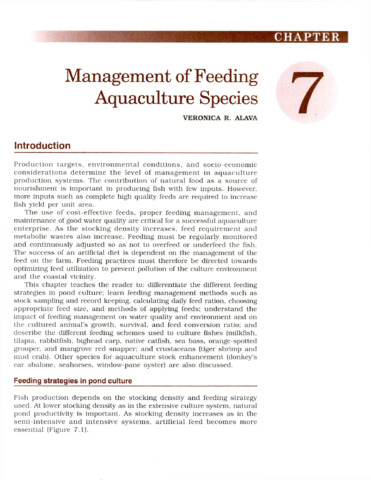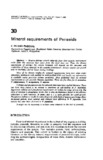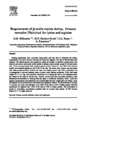| dc.contributor.author | Piedad-Pascual, Felicitas | |
| dc.contributor.editor | Fortes, R. D. | |
| dc.contributor.editor | Darvin, L. C. | |
| dc.contributor.editor | de Guzman, D. L. | |
| dc.date.accessioned | 2011-06-22T09:35:15Z | |
| dc.date.available | 2011-06-22T09:35:15Z | |
| dc.date.issued | 1989 | |
| dc.identifier.citation | Piedad-Pascual, F. (1989). An overview of the nutrition, feed and feeding techniques of prawn penaeid/shrimps. In R. D. Fortes, L. C. Darvin, & D. L. de Guzman (Eds.), Fish and Crustacean Feeds and Nutrition. Proceedings of the Seminar-Workshop on Fish and Crustacean Feeds and Nutrition, 25-26 February 1985, Iloilo City, Philippines (pp. 4-9). Laguna, Philippines: Philippine Council for Aquatic and Marine Research and Development. | en |
| dc.identifier.uri | http://hdl.handle.net/10862/316 | |
| dc.description.abstract | This paper echoes what transpired during the first International Conference of Penaeid Prawns/Shrimps held in Iloilo City in December 4-7, 1984, particularly on the Nutrition nd Feed Development. Around 25 papers were presented during the conference.
The nutrient requirements of P. japonicus and to some extent, P. monodon have been studied quite extensively compared to other penaeid species. Requirements for protein, carbohydrates fats, amino acids and essential fatty acids for juveniles and larvae have been defined compared to those of the broodstock.
Optimum protein levels for prawn juveniles vary from 28-38% for P. kerathurus, 40-46% for P. monodon, 43% for P. indicus and 50-54% for P. japonicus. Dissacharides like sucrose and trehalose have been found to be good source of carbohydrates at 20-25% in the diet. Crustacean diets require around 0.5% cholesterol. There are few studies on vitamine and mineral requirements.
There are artificial diets for juveniles and microencapsulated diets that can completely replace live organisms as larval feed. Microencapsulated diets have been field-tested for P. vannamei, P. stylirostris, P. monodon, P. indicus and P. merguiensis in Ecuador, Taiwan, Malaysia, Thailand and the Philippines.
When a commercial diet for the broodstock becomes available ther will be an artificial diet for athe life cycle of tha prawn. | en |
| dc.language.iso | en | en |
| dc.publisher | Philippine Council for Aquatic and Marine Research and Development | en |
| dc.relation.ispartof | In: Fortes, R.D., Darvin, L.C., de Guzman, D.L. (eds.). Fish and Crustacean Feeds and Nutrition. Proceedings of the Seminar-Workshop on Fish and Crustacean Feeds and Nutrition, 25-26 February 1985, Iloilo City, Philippines. Los Baños, Laguna, Philippines: Philippine Council for Aquatic and Marine Research and Development. pp. 4-9 | en |
| dc.subject | Crustacea | en |
| dc.subject | Shrimp culture -- Feeding and feeds | en |
| dc.subject | Nutrition | en |
| dc.subject | Nutritional requirements | en |
| dc.subject | Philippines | en |
| dc.subject | Giant tiger shrimp | en |
| dc.subject | Penaeus monodon | |
| dc.subject | Penaeus japonicus | |
| dc.subject | Penaeus kerathurus | |
| dc.subject | Penaeus indicus | |
| dc.subject | Penaeus vannamei | |
| dc.subject | Penaeus stylirostris | |
| dc.subject | Penaeus merguiensis | |
| dc.subject.lcc | VF SP 107 | |
| dc.title | An overview of the nutrition, feed and feeding techniques of prawn penaeid/shrimps | en |
| dc.type | Conference paper | en |
| dc.citation.spage | 4 | |
| dc.citation.epage | 9 | |
| dc.citation.conferenceTitle | Fish and Crustacean Feeds and Nutrition. Proceedings of the Seminar-Workshop on Fish and Crustacean Feeds and Nutrition, 25-26 February 1985, Iloilo City, Philippines | en |
| dc.subject.scientificName | Penaeus monodon | |



